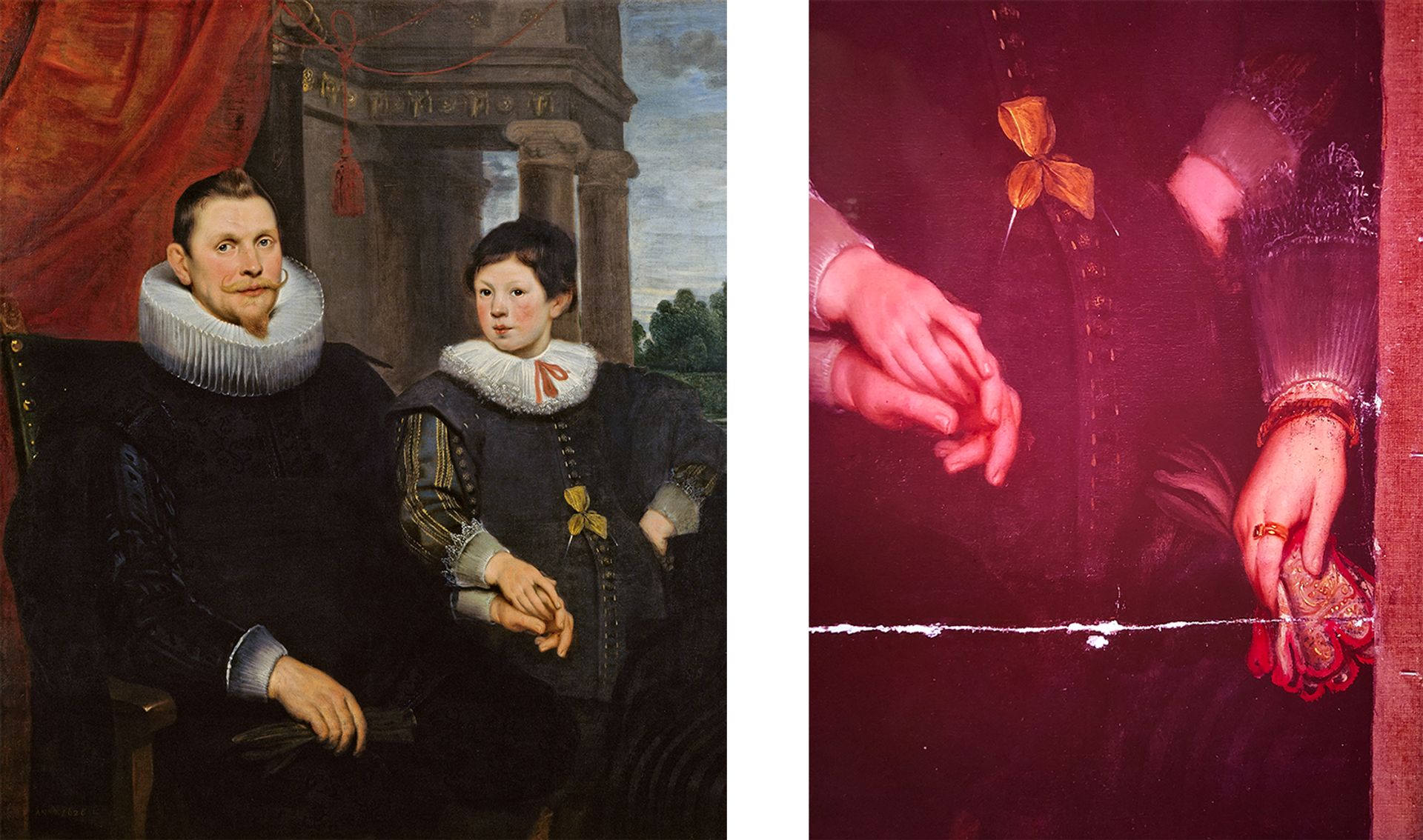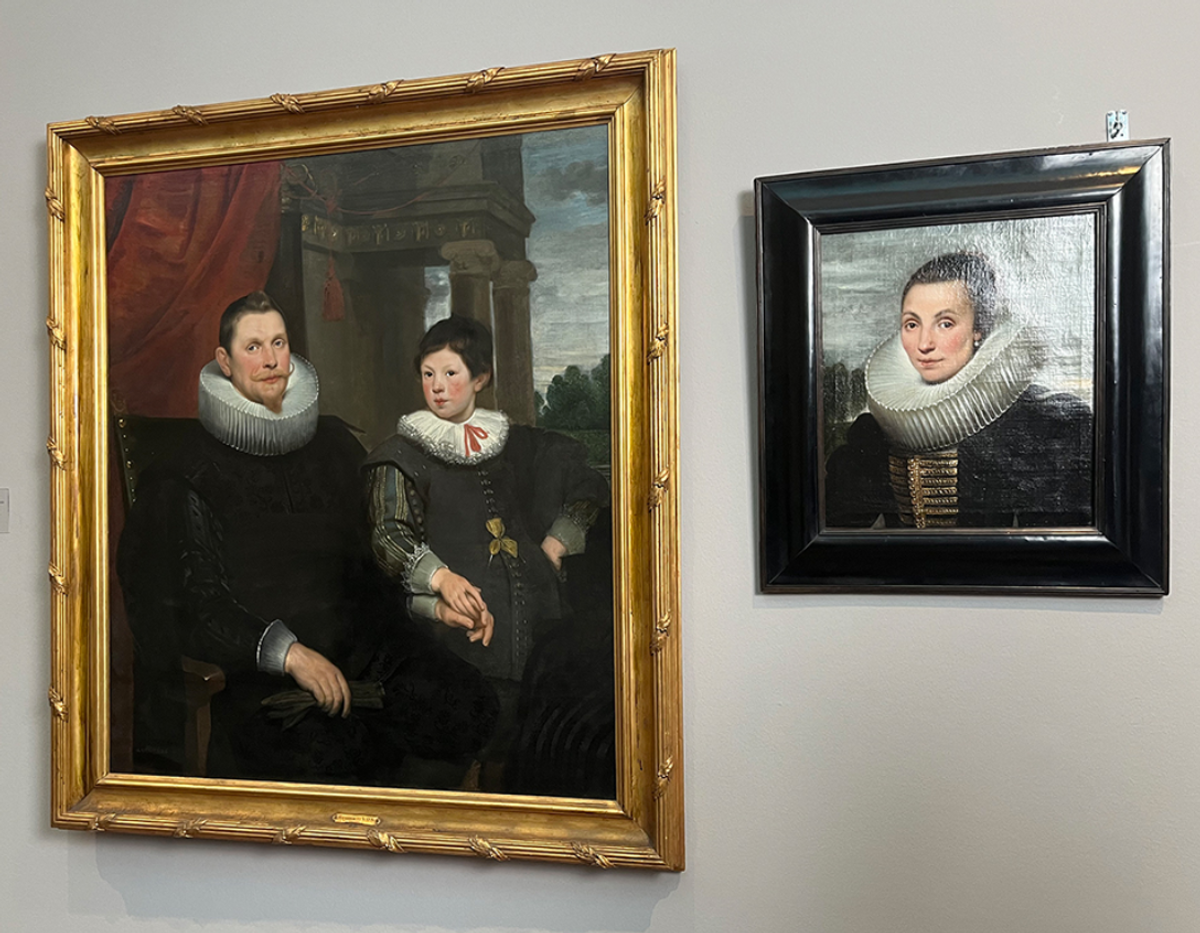Two separate parts of a 17th-century family portrait split in half have been reunited by scholars after almost 200 years. Double Portrait of a Father and Son—painted in 1626 by the Antwerp-based portrait painter Cornelis de Vos—depicts a family of three, but the painting was missing a piece, indicated by the glimpse of a dress in the lower right-hand corner.
Double Portrait of a Father and Son belongs to the private Nivaagaard Collection based in Niva, Denmark. Jørgen Wadum, a special consultant at the Nivaagaard Collection and Angela Jager, a curator at the RKD-Netherlands Institute for Art History in The Hague, joined forces to try and track down the missing work last year.

Above left: Cornelis de Vos, Double Portrait of a Father and Son (1626), and, above right, a detail of the lower right-hand corner of the cleaned painting Nivaagaard Collection/National Gallery of Denmark, SMK
Initially they found photographs in a 1966 conservation report by the National Gallery of Denmark which revealed further details, uncovering part of the arm of the lost woman. The pictures presented new clues, showing the woman’s elaborate cuff and her hand holding a pair of embroidered gloves lined with red velvet.
“To their great excitement, this led them to identify a portrait of an elegant lady with a large millstone collar like that of the father in the double portrait. It was De Vos’s Portrait of a Lady from 1626 which was auctioned for sale at Christie’s in London in 2014,” a statement from the Nivaagaard Collection says.
The work was bought in London by the Amsterdam-based dealer Salomon Lilian, who cleaned the painting. Following restoration, the landscape in the background of the double portrait was revealed, showing a dyke and a row of poplar trees behind the boy’s left shoulder, which continues in the portrait of the woman. Crucially, her facial features and brown eyes match those of the boy, the statement adds.
Recently, a grant from the New Carlsberg Foundation in Copenhagen allowed the Nivaagaard Collection to acquire the portrait of the mother. The height of the painting of the mother is less than half that of the painting of the father and son, suggesting that the original work was likely separated carefully into two standalone paintings after sustaining damage, most likely between 1830 and 1859, the collection says.
Andrea Rygg Karberg, the director of the Nivaagaard Collection museum, said in a statement: “It is a huge scoop for Dutch baroque art history and for our collection that research has led us to the discovery of this incredible female portrait. The mother now looks out at us together with her son, whose gaze is so similar to hers. All three of the subjects take on an entirely new dimension, depth and glow when they are contemplated together as originally intended, rather than in isolation from each other.”


